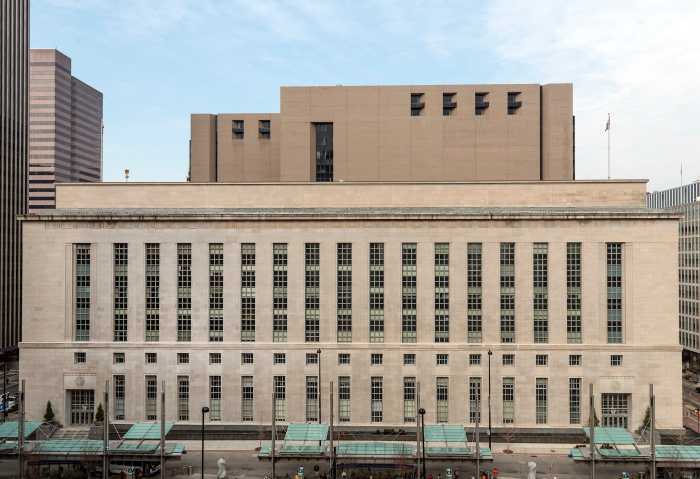The DuBerrys have lived on the last lot of a dead end street in Springfield Gardens since 1957. Theyre veterans of the neighborhood. They know the schools from raising three kids. They know the community concerns from attending civic meetings and community boards. And, as long-time residents, they know what has made their neighborhood special: single- and two-family homes with enough lawn space to spruce with flowers and enough parking space to not spend an evening driving around looking for an open spot.
But drawing their living room blinds reveals a portentous view. Directly across from their home on 161st Street is a hollowed-out house with a crumbling chimney. Recently, the single-family home was sold to developers. They showed up in January with workers to demolish the interior and lay foundation to convert it into a multi-family dwelling. The only problem, according to Ruth and John DuBerry, was the contractor never bothered to get a construction permit from the Department of Buildings (DOB). As a result, DOB and the Department of Environmental Protection paid the home a visit, shuttered the makeshift construction site and turned off its water.
Developers doing construction without a permit, the DuBerrys said, is only one part of the story. The larger problem, they said, is the change taking place in the last couple of years, where single- and two-family, detached- and semi-detached homes have given way to a series of row houses and multi-family dwellings. These developments, they and other long-time residents say, are straining the neighborhoods infrastructure, reducing parking spots and burdening already overcrowded schools.
Letter Written
Their concerns were made clear in February in a letter written to the borough presidents zoning task force chairman, Bernard Haber, by the United Neighbors Civic Association of Jamaica, of which Ruth DuBerry is a member.
"We found an abundance of real estate agents and contractors have invaded our area of basically one- and two-family detached and semi-detached houses and purchased, demolished and replaced these houses with multiple family dwellings and row houses," wrote Sidney Spruill, president of the association. "This over-development in our community has already had a negative impact, causing a devastating change in the character and quality of life of our neighborhood."
The letter outlined the preliminary work that the association has done to curtail multi-family developments. With the guidance of the City Planning Department, it is trying to down zone their neighborhood a process that would rewrite zoning rules and limit new developments to single- and two-family dwellings. The area they want to change is bounded by Baisley Boulevard, Guy R. Brewer Boulevard and North Conduit Avenue, which roughly enclose the neighborhood in the shape of a triangle.
Expansions Increase
Multi-family dwellings have proliferated in the past two years because the neighborhood is zoned for a higher density than what has traditionally been built there. Their push to down zone joins a growing list of neighborhoods around the borough Bayside, Richmond Hill and Flushing, to name a few looking to curtail the flood of development of multi-family dwellings and "McMansions" that, residents say, is ruining their communities character and quality of life.
The DuBerrys and other members of the civic association have made it clear they are not against development that fits the neighborhoods character. Ruth DuBerry cites one young developer from the community, R. W. Hall, who is building affordable one- and two-family homes. Its the higher density homes, they say, that are ruining the quality of life.
"People that live here cant park," said John DuBerry, complaining that some developers in his neighborhood have taken to building on driveway space, forcing more cars to park on the streets. "Why should they have a house which they pay taxes for and they cant park?"
"We like grass, we like to have flowers around the house," said Ruth DuBerry, also carping that developers are limiting the amount of lawn space. "A lot of the people dont care, so they will cement the front of their houses."
She added that the neighborhoods water pipes are old and the increased number of residents strains them.
Zoning Process
As the first step in down zoning process, City Planning required the civic association members to survey each building in the neighborhood to determine the character. They completed the survey in February and will soon meet again with City Planning. Before any rule changes, the down zoning will have to be formally approved by City Planning, Community Board 12 and the borough presidents office.
After a presentation last Wednesday night, the plan appears to have the community board members endorsement.
"We support them," said Yvonne Reddick, district manager of Community Board 12. "Development is ruining the character of the neighborhood. This is the reason they are working on down zoning to try and keep their community intact."





























